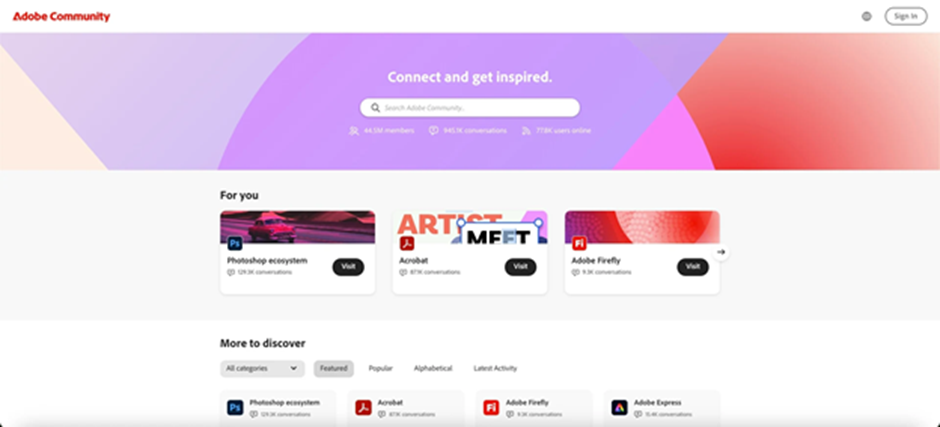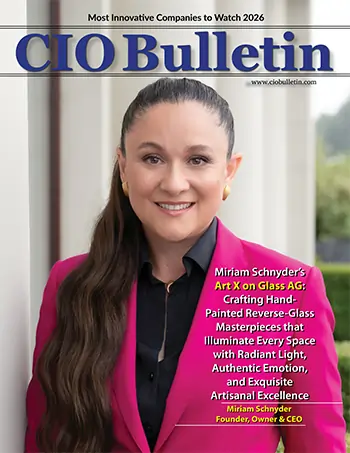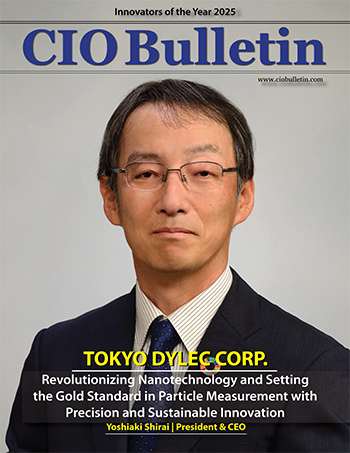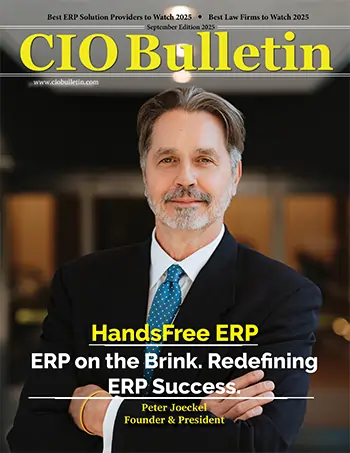Home Technology Software Inside Adobe’s Strategy for ...
Software

CIO Bulletin
17 April, 2025
- Madison Brooks
Most enterprise communities start full of life and end up deserted. Threads go unanswered, forums fill with noise, and engagement disappears. Adobe’s story is different. Over the past decade, it has quietly built a digital ecosystem of more than 200 specialized product communities that support millions of users. It runs efficiently with minimal oversight yet delivers measurable strategic impact.
Adobe’s success isn’t accidental. It comes from a deliberate, federated, knowledge-driven, and identity-centered model that scales engagement without increasing cost. For digital product leaders and SaaS strategists frustrated by platforms that turn noisy or stagnant, Adobe offers a clear, operational blueprint for sustainability and value creation.

Most online communities fail because they’re built as one-size-fits-all spaces. Adobe took the opposite approach by building a federated network of more than 200 product-specific communities that mirror its software portfolio. This hierarchical structure prevents topic dilution and ensures that every conversation connects directly to real product use.
Each hub operates as a focused environment with its own purpose:
Photoshop hosts over 129,000 discussions centered on imaging and design.
Premiere Pro supports more than 99,000 threads for video professionals.
Acrobat manages over 87,000 conversations tied to document management.
Even niche products such as Substance 3D Modeler (142 threads) and Adobe Podcast (218 threads) maintain active, focused spaces.
Within each hub, Adobe sustains focus through sub-forums and intuitive navigation. Acrobat, for example, branches into smaller communities for form creation, editing, and integrations. Users receive personalized feeds across Photography, Design & Layout, and Video & Motion, with filters that surface trending or active discussions for faster discovery.
For digital product leaders, Adobe’s federated framework illustrates how targeted segmentation strengthens participation. It minimizes cognitive overload, keeps exchanges relevant, and scales engagement in step with product complexity.
Accessibility is where many communities fail. Users rarely leave their workflows to seek help elsewhere. The solution was to embed the community directly inside the product experience.
A “Community” button embedded within Creative Cloud applications connects users to relevant discussions at the exact moment a problem arises, removing friction and letting them tap into shared knowledge without leaving their creative flow. The community becomes part of the product experience itself, not an external forum.
For enterprises, the takeaway is clear. Integrating support directly into the user journey strengthens retention and satisfaction, reinforcing the principles of long-term success through community strategy.

The community operates on two interconnected systems that convert everyday exchanges into lasting knowledge assets.
The process is simple but powerful. A user posts a question, and responses come from fellow customers, Community Experts, or Adobe employees. When the asker marks the best response as the “Correct Answer,” that temporary discussion becomes a permanent, searchable solution. Over time, this creates a self-reinforcing cycle in which more verified answers improve search results and reduce repetition.
Each correct answer strengthens the ecosystem, improves search, cuts repeat questions, and adds to a living archive that deflects thousands of requests from higher-cost channels such as phone or chat support. For SaaS organizations, it’s a scalable, user-driven support model that increases efficiency while deepening customer engagement.
The second loop reflects Adobe’s top-down engagement. The community serves as an official channel for updates, product announcements, and dialogue through comments and upvotes. Community managers spotlight standout solutions, creative insights, or high-value contributions that exemplify quality participation. Featured posts appear prominently in navigation, setting benchmarks for the kind of discourse the platform values most.
Together, these loops create a flywheel effect. Users generate solutions that enrich the knowledge base, Adobe amplifies excellence to reward contributions, and that visibility attracts new participants, fueling a continuous cycle of relevance and growth.
Anyone can browse Adobe’s community, but participation requires signing in and creating a verified profile. Users are prompted to add a photo, title, location, and short bio describing expertise and interests.
When users complete their profiles, anonymity fades and trust grows. Advice from a named professional, such as “Jane Doe, Senior Graphic Designer, Berlin,” carries more weight than an anonymous username like “User12345.” Profiles help others gauge expertise quickly and create accountability that keeps conversations both respectful and valuable.
In practice, Adobe transforms digital identity into social capital. For enterprise leaders, the takeaway is clear: when communities reward transparency and expertise, they evolve from open forums into reliable knowledge networks built on trust and professional validation.

If Adobe’s community architecture defines the structure, the Community Experts Program is its strategic masterstroke. This initiative identifies and empowers consistent, high-quality contributors, transforming them into trusted advocates. These experts aren’t Adobe employees. They include designers, freelancers, educators, authors, and other seasoned professionals who demonstrate sustained engagement and technical credibility.
Unlike moderators, Community Experts aren’t hired to manage discussions; they're selected for consistently elevating discussions with accurate, reliable insights. Their motivation combines passion with recognition, not compensation, giving their contributions authenticity that corporate messaging cannot replicate.
The program shows how formal recognition turns everyday contributors into trusted advocates, institutionalizing expertise across the platform, enabling organizations to scale expertise and community leadership without increasing operational overhead.
Adobe’s blueprint applies well beyond creative software. The same architecture can strengthen SaaS ecosystems, gaming platforms, and hardware or productivity solutions. Its transferable principles are clear:
Federated structures that keep discussions specialized and relevant.
Engagement loops that turn user interactions into reusable knowledge assets.
Verified identities that foster accountability and trust.
Advocacy programs that recognize and scale user expertise through reciprocal value.
Replication, however, requires more than technology. It depends on cultural alignment, consistent governance, and genuine respect for the community’s voice. Organizations that treat engagement as a strategic asset, not an expense, are the ones that sustain growth.
Companies that follow this path position themselves for compounding returns. Every shared insight strengthens the collective knowledge base, turning users into collaborative partners who expand the ecosystem with every solution and shared idea. That outcome goes beyond customer support and becomes a lasting competitive edge.







